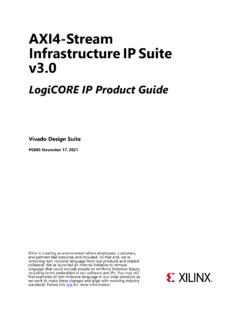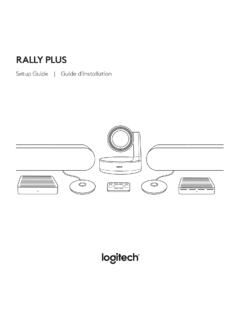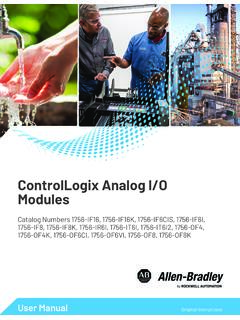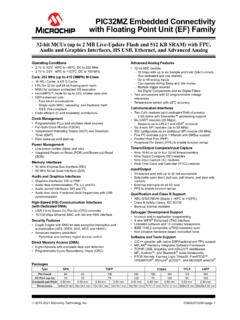Transcription of MuleSoft - Tutorialspoint
1 MuleSoft i MuleSoft ii About the Tutorial Mule ESB is a lightweight and highly scalable Java-based enterprise service bus (ESB) and integration platform provided by MuleSoft . Mule ESB allows developer to connect applications easily and quickly. Regardless of various technologies used by applications, Mule ESB enables easy integration of applications, enabling them to exchange data. Audience This tutorial will be useful for developers who are working on Mule ESB, and for migrators who are migrating Mule with other technologies. Besides, graduates, post graduates, and research students, who either have an interest in this technology or have this as a part of their curriculum, will also be benefited from this tutorial.
2 The reader can be a beginner or an advanced learner. Prerequisites The reader must have basic knowledge about Java and Eclipse. He/she should also be aware of basic terminologies used in database and scripting languages like Python, Ruby and JavaScript. Copyright & Disclaimer Copyright 2019 by Tutorials Point (I) Pvt. Ltd. All the content and graphics published in this e-book are the property of Tutorials Point (I) Pvt. Ltd. The user of this e-book is prohibited to reuse, retain, copy, distribute or republish any contents or a part of contents of this e-book in any manner without written consent of the publisher.
3 We strive to update the contents of our website and tutorials as timely and as precisely as possible, however, the contents may contain inaccuracies or errors. Tutorials Point (I) Pvt. Ltd. provides no guarantee regarding the accuracy, timeliness or completeness of our website or its contents including this tutorial. If you discover any errors on our website or in this tutorial, please notify us at MuleSoft iii Table of Contents About the Tutorial .. ii Audience .. ii Prerequisites .. ii Copyright & Disclaimer .. ii Table of Contents .. iii 1.
4 MuleSoft Introduction to Mule ESB .. 1 Implementing ESB .. 1 ESB s Guiding Principles .. 1 Need of ESB .. 2 P2P integration vs. ESB integration .. 2 What is Mule ESB? .. 4 Features & Capabilities of Mule ESB .. 4 2. MuleSoft The Mule Project .. 5 History .. 5 Competitors of Mule ESB .. 6 Mule s Core Concept .. 6 Architecture .. 6 Building Blocks .. 7 Mule Message Structure .. 9 3. MuleSoft Mule in Our Machine .. 11 Prerequisites .. 11 System Requirements .. 12 Download Mule .. 12 Install and Run Mule .. 12 Start Mule Services .. 13 Deploy Mule Apps .. 14 MuleSoft iv Stop Mule Services.
5 14 4. MuleSoft Anypoint Studio .. 15 Prerequisites .. 15 Downloading and Installing Anypoint Studio .. 15 Features of Anypoint Studio .. 18 5. MuleSoft Discovering Anypoint Studio .. 20 The Message Flow tab .. 20 The Global Elements tab .. 20 The Configuration XML tab .. 21 Views .. 21 6. MuleSoft Creating First Mule Application .. 26 Launching Anypoint Studio .. 26 User Interface of Anypoint Studio .. 26 Steps for Creating Mule Application .. 27 Verifying Mule Application .. 34 7. MuleSoft DataWeave Language .. 35 Features of DataWeave Language .. 35 Prerequisites.
6 36 Steps for Using DataWeave Script with Example .. 36 8. MuleSoft Message Processor and Script Components .. 38 How to Install Scripting Modules? .. 38 Implementing Example .. 38 Message Sources .. 40 Inbound .. 40 Outbound .. 40 Message Processor .. 41 9. MuleSoft Core Components And Their Configuration .. 42 Configuring the component .. 42 MuleSoft v Custom Business Events .. 44 Dynamic Evaluate .. 45 Flow Reference Component .. 46 Logger Component .. 50 Transfer Message Component .. 51 10. MuleSoft Endpoints .. 53 Scheduler Endpoint .. 53 Ways to configure a Scheduler.
7 53 11. MuleSoft Flow Control & Transformers .. 55 Flow Control (Routers) .. 55 Choice Router .. 55 Scatter-Gather Router .. 56 Transformers .. 57 Remove variable 57 Set Variable Transformer .. 58 12. MuleSoft Web Services Using Anypoint Studio .. 60 REST Web Service .. 60 Testing the Application .. 62 SOAP Component .. 63 Testing the Application .. 66 13. MuleSoft Mule Error Handling .. 68 Components of Mule Error .. 68 Error Types .. 70 Kinds of Error Types .. 70 Categories of Mule Error .. 71 Handling Mule Errors .. 71 Configuring try scope for handling transactions.
8 73 14. MuleSoft Mule Exception Handling .. 75 MuleSoft vi Exceptions in Mule .. 75 Why to Categorize Exceptions? .. 76 Exception Handling Strategies .. 76 15. MuleSoft Testing with 78 Features of MUnit .. 78 Latest Release of Mule MUnit Testing Framework .. 78 MUnit and Anypoint Studio .. 79 Creating and Designing MUnit Tests .. 79 Configuring the test .. 82 Running the Test .. 84 Viewing and Analyzing Test Result .. 86 Debugging the test .. 87 MuleSoft 1 ESB stands for Enterprise Service Bus which is basically a middleware tool for integrating various applications together over a bus-like infrastructure.
9 Fundamentally, it is an architecture designed to provide a uniform means of moving work among integrated applications. In this way, with the help of ESB architecture we can connect different applications through a communication bus and enable them to communicate without depending on one another. Implementing ESB The main focus of ESB architecture is to decouple the systems from each other and allow them to communicate in a steady and controllable way. ESB s implementation can be done with the help of Bus and Adapter in the following way: The concept of bus , which is achieved through a messaging server like JMS or AMQP, is used to decouple different applications from one another.
10 The concept of adapter , responsible for communicating with backend application and transforming data from application format to bus format, is used between applications and bus. The data or message passing from one application to another through the bus is in a canonical format which means there would be one consistent message format. The adapter can also perform other activities like security, monitoring, error handling and message routing management. ESB s Guiding Principles We can call these principles as core integration principles. They are as follows: Orchestration: Integration of two or more services to achieve synchronization between data and process.

















